
May 4, 2016
Amateur archaeologist Johan Vanderwalle received a phone call one day in 2006 which changed his life, and the lives of families on the other side of the world.
He has been haunted ever since.
Johan lives in Flanders, near the battlefields whose names resound across generations of Australians: Passchendaele, Ypres, Polygon Wood.
As a youngster, he would pick up bullets – Australian, Canadian, English, German – from fields around the area.
“I was always fascinated by the stories,” he told a special group gathered at the Nanango RSL Club on Tuesday.
“I was always guided by the local people.”
As he grew older he turned away from his hobby, only to return to it when he was 31 and a carpenter.
He began excavating the entrances to the many tunnels around Polygon Wood, tunnels which once accommodated a total of 50,000 troops underground.
His hobby is dangerous as there are still live munitions on the battle sites, including unexploded shells and grenades; some of the local residents thought he was a bit crazy but they all knew he was interested if they found anything.
“It is my passion, my hobby,” he said. “My mother would say,’Why do you have to do this?’ and I would say ‘the only way to get close to the first war is to go down in the tunnels’.”
Then in 2006 he received a telephone call from the foreman of a gas company which was laying pipes in the area. An excavator had uncovered what looked like human remains.
This wasn’t unexpected as there are thousands of missing soldiers from World War I in the area.
However, Johan begged the company to stop work to allow him to investigate: “Don’t kill them again!”
“I told the police and the archaeology department, and they said ‘You can do it’,” Johan said.
As he began to dig, Johan found two pairs of shoes belonging to the first two soldiers, then he found another soldier, and another and another.
His pit was slowly extending across the roadside so he had to get permission from the council to enlarge his excavation.
Johan asked the police to guard the site overnight to keep souvenir hunters away, but when they refused to do it, he stayed by the graves himself.
Over a few days five bodies came fully into view.
One was wrapped tightly in a groundsheet, his face covered.
“As we lifted the groundsheet, at this moment I thought ‘This is when I will find out who you are, where you are from’,” Johann said.
It was the body of an Australian soldier, and the preservation was remarkable. It seems the road surface had protected the temporary grave.
There was still skin on his face and his eyes were open.
“I saw the angle of the sun. I moved a bit to the right as my shadow was over him, and then I saw his eye …
“It was like a message in a bottle.”
Johan was determined to find out more about this Aussie soldier who seemed to be sending him a message from the past.
There were no personal artefacts buried with the body so DNA matching was the only solution to confirm his identity.
Back in Australia, Mollie Millis wondered if the John Hunter listed in the media as the possible identity of one the five bodies uncovered at Zonnebeke was her Uncle Jack who had left Nanango in 1916 to go to war.
Her DNA sample successfully identified her uncle’s body.
In 2007, 90 years after his death, Jack was laid to rest at the Buttes New British Cemetery at Polygon Wood. The event created world headlines.
“This was the first soldier ever identified (from this battlefield) this way,” Johan said. “They never do it because there are just too many. They are just buried as ‘known to God’.”
* * *
Many of the Hunter family still live in the Nanango area and they were interested listeners as Johan shared his story and photographs on Tuesday.
However, Johan’s visit wasn’t just about helping a family reunion.
The story of Jack Hunter and his brother Jim (see below) has haunted Johan ever since Jack “caught his eye” from the grave.
Johan has a vision of building a monument near Polygon Wood to the brothers – and all brothers who were caught up in World War I, from all countries.
The land for the monument, a former part of the battlefield, is available and money has already been raised in Belgium to help create the memorial.
The plan is to create a bronze statue of a soldier cradling his dying brother, and a sculpture showing two interlocking circles.
Johan would like a similar monument to be built in Australia as part of the symbolism linking brothers on both sides of the world.
His project is dubbed “Brothers In Arms” and he feels he cannot rest until the monument becomes a reality.
- External link: Brothers In Arms Memorial Park
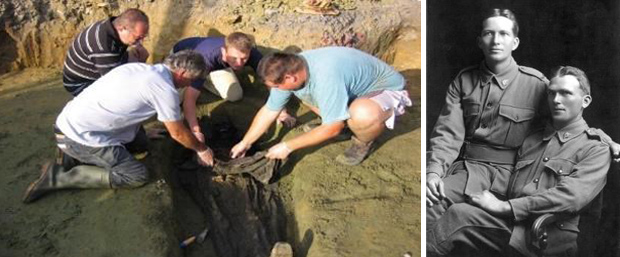

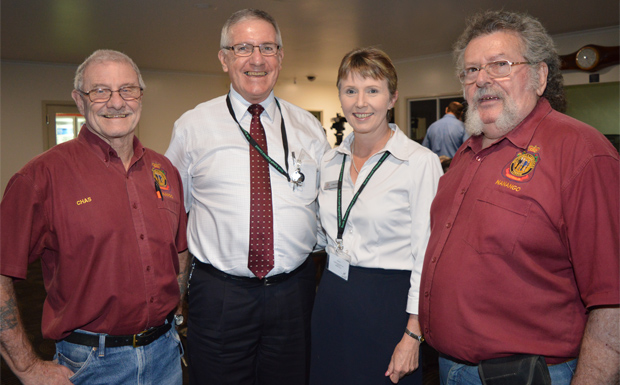
* * *
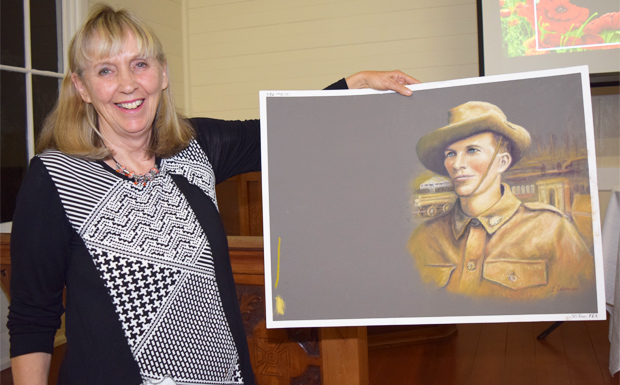
The Story Of Jack Hunter
Private John “Jack” Hunter, (1889-1917) was the oldest of seven children born to Henry and Emily Hunter.
Jack and his younger brother Jim enlisted in Brisbane in 1916 and sailed to Egypt. After some basic training they were despatched to Europe’s killing fields as part of the 49th Battalion.
They soon found themselves in Flanders Fields …
On the morning of September 26, 1917, Jack died in Jim’s arms before the battle for Polygon Wood – part of the Ypres campaign – had even begun.
The story goes that as the Diggers moved into position for the pre-dawn attack, the rising sun caught on a piece of metal on the battlefield, reflecting back into the troops’ eyes. Jack was sent out into no man’s land to retrieve it, but as he did so, he fell wounded.
He managed to crawl back to the trenches, where Jim cradled him as he died.
Jack had enlisted to help look after his younger brother. In the end it was Jim who tended to Jack’s last moments.
He carefully wrapped his brother’s body in a groundsheet, bound by wire, and buried him facing south-west in a temporary grave, vowing to return.
But just a few days later, the area was so badly churned up he could not find the spot.
After the war, Jim returned again to the former battlefield but still could not find the grave.
This wasn’t surprising as the former residents of the Zonnebeke region couldn’t recognise the area either, as the fields had been so heavily shelled.
Later a road was built crossing the temporary grave of Jack and four other Australian soldiers.
Jim never forgot his brother, and according to a family story, as he lay dying in the 1970s he suddenly opened his eyes and called out for Jack once more …
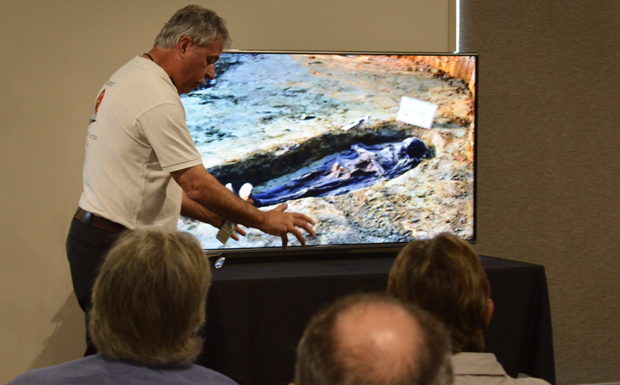
* * *
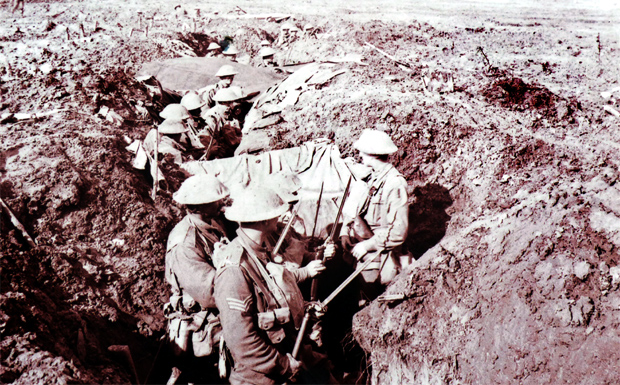
In Flanders Fields
In Flanders fields the poppies blow, Between the crosses, row on row,
That mark our place; and in the sky, The larks, still bravely singing, fly
Scarce heard amid the guns below.
We are the Dead. Short days ago, We lived, felt dawn, saw sunset glow,
Loved and were loved, and now we lie, In Flanders fields.
– by John McCrae























